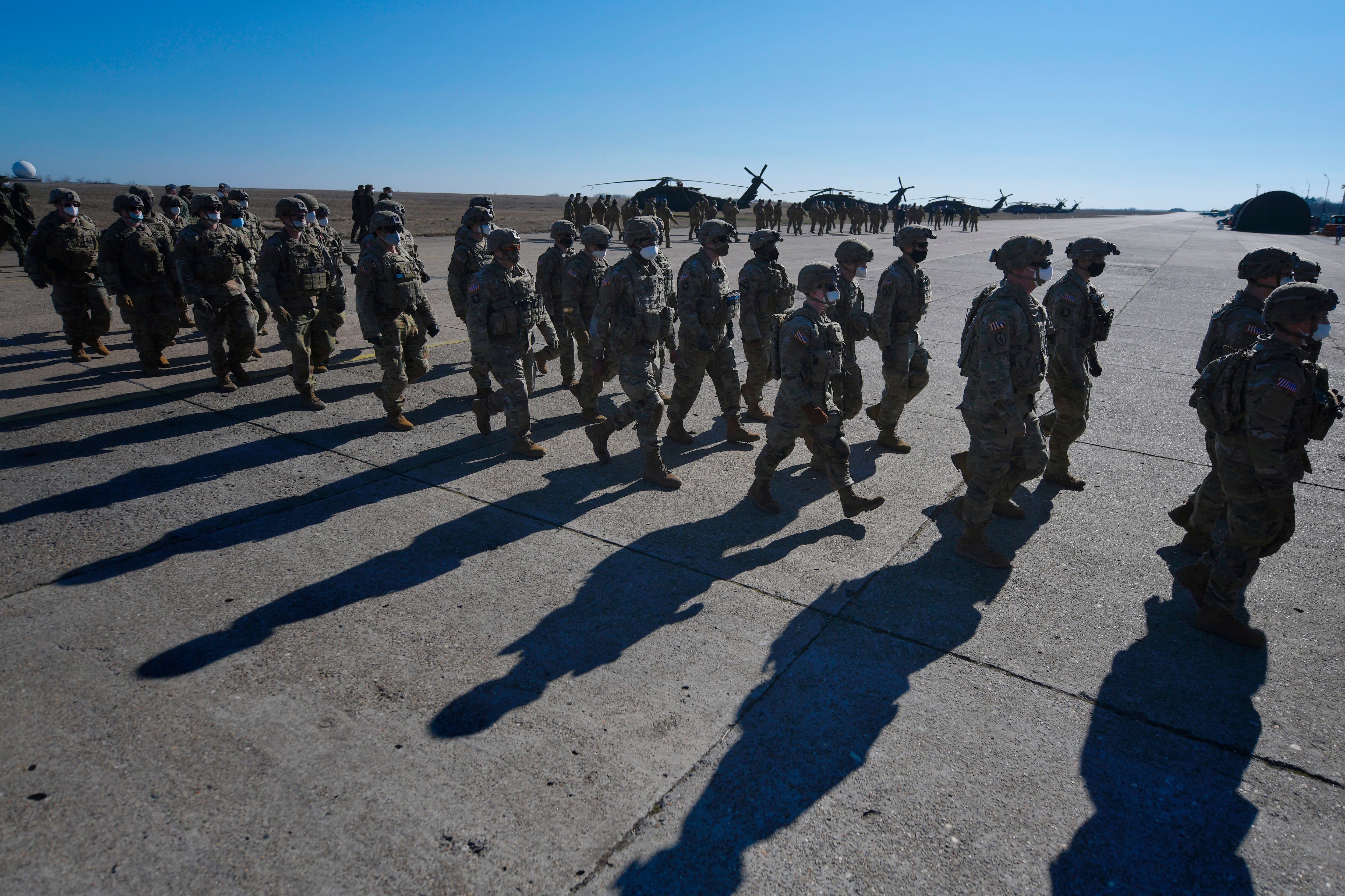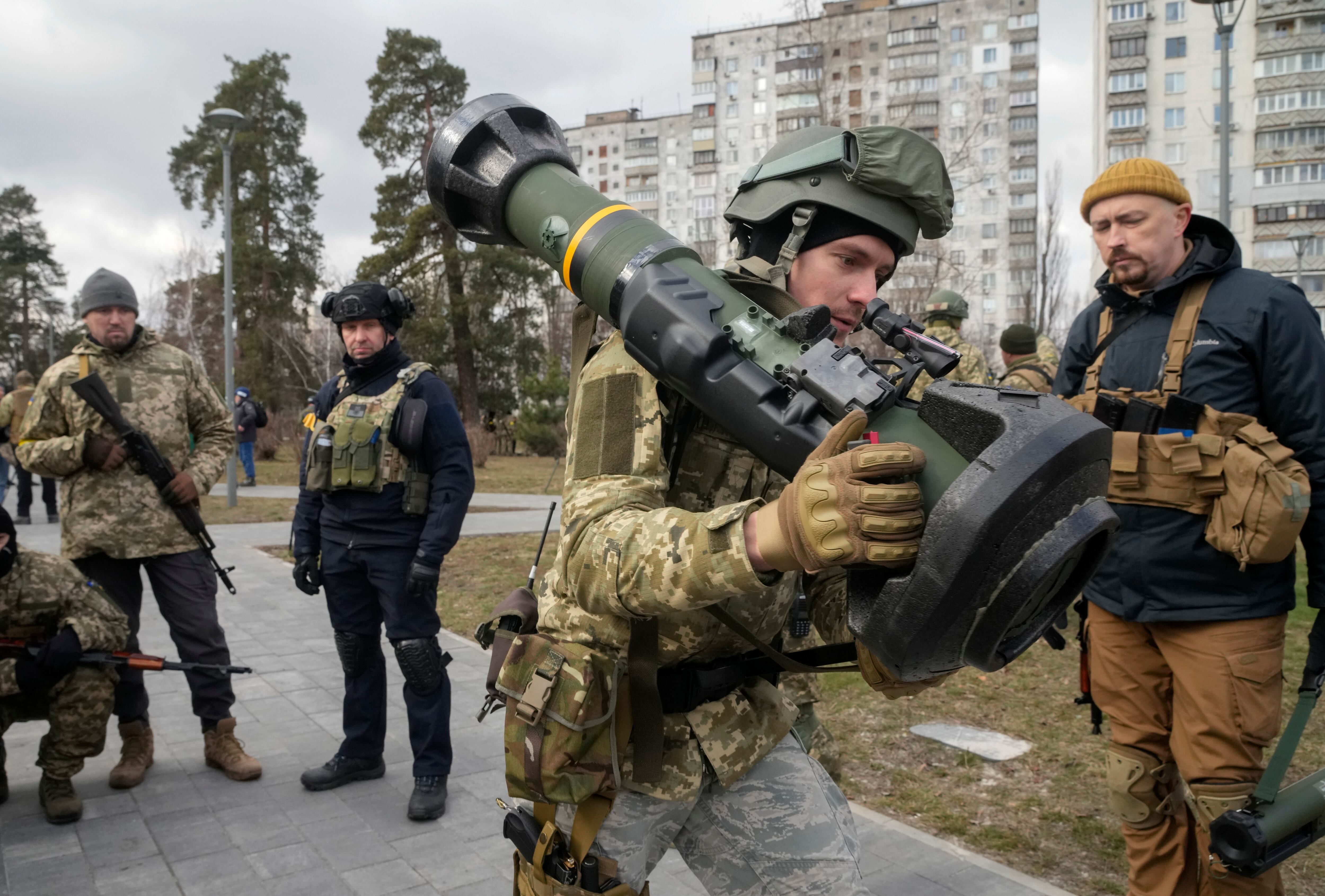WASHINGTON ― Lawmakers on Wednesday unveiled a $13.6 billion Ukraine aid package that took President Joe Biden’s request for weapons and training for Ukrainian forces and put it on steroids.
Part of a sweeping $1.5 trillion measure to fund the federal government, the $13.6 billion package would buy $3 billion in new weapons for Ukraine, instead of the $1.5 billion in new weapons included in Biden’s $10 billion request. It’s a win for Ukrainian President Volodymyr Zelenskyy, who pleaded with U.S. lawmakers in a Zoom call Saturday for more support as his country fights a Russian invasion.
“We are all deeply moved — we can’t stay away from the TV and watching what is happening in Ukraine,” House Appropriations Committee Chairwoman Rosa DeLauro, D-Conn., said in a statement. “This bill responds to Russia’s unprovoked ... invasion of Ukraine with $13.6 billion in emergency assistance to support the people of Ukraine and their neighbors.”
With the West unifying behind Ukraine’s fight, the White House’s initial $6.4 billion ask on Feb. 25, the second day of the war, grew with pressure from lawmakers to a $10 billion request on March 3. After lawmakers met virtually with Zelenskyy on Saturday, Senate Majority Leader Chuck Schumer, D-N.Y., said Monday the aid would exceed $12 billion.
The next day, Senate Minority Leader Mitch McConnell, R-Ky., hailed Schumer for “working in good faith to accommodate my request that the funding bill significantly increase the security assistance drawdown fund available to the president and to backfill our DoD stockpiles that are helping our friends in harm’s way.”
By that time, a growing sense of urgency had gripped Capitol Hill.
“In the briefings we were getting before this started, we were hearing it would be a matter of days, Kyiv’s going to fall,” said one House Republican aide who was not authorized to speak on the record. “The Russians obviously thought that, and we kind of did too, and I think with the bravery of the Ukrainian people, that they’re fighting and the resilience they’re showing, it’s really inspiring folks.”
At the McAleese and Associates conference Wednesday, Pentagon Comptroller Mike McCord expressed gratitude to Congress for augmenting the package. Congress’s “big move” was to increase Biden’s presidential drawdown authority to send weapons from U.S. military stocks to Ukraine.
“The thing that increased the Ukraine supplemental from the $10 billion that was asked for to the [$13.6 billion] we got was really in” presidential drawdown authority, he said, calling it a “very hopeful sign” of broad bipartisan support.
Beyond funding military aid for Ukraine and NATO allies and the U.S. military’s ongoing troop deployments, there’s billions more for federal agencies to provide economic and humanitarian aid and enforce stiff sanctions on Russia.
More broadly, defense-related spending in the omnibus bill would rise by $42 billion over last year’s level of $782 billion. And Republicans succeeded in making sure the Ukraine package did not eat into the Pentagon’s share of the omnibus.
The Ukraine package, “provides critically needed emergency assistance for our allies that are resisting Russian aggression in Ukraine without decreasing base defense funding by a single dollar,” Appropriations Committee Vice Chairman Richard Shelby, R-Ala., said in a statement.
RELATED

The aid package contains $3.5 billion for weapons and training for Ukraine through flexible Pentagon operations and maintenance funds. The account can last through FY24 and be used to backfill stocks of U.S. equipment and training provided to Ukraine (some of which was already sent), provided the Pentagon notifies Congress at least 30 days before, the bill language says.
According to Todd Harrison, director of defense budget analysis and of the Aerospace Security Project at the Center for Strategic and International Studies, the abnormal amount of discretion Congress would approve speaks to the unpredictability of the crisis.
“They’re not putting tight limits on it, and DoD will have to report back on how it’s being used, but it’s a really broad authority,” Harrison said. “It shouldn’t be surprising because it’s impossible to know what the U.S. is going to need to transfer to Ukraine and then what of these things that we transfer do we have to restock.”
Oversight provisions require the Pentagon and State Department to submit a report on U.S. and foreign assistance to Ukraine and plans to replenish U.S. and NATO stocks sent to Ukraine ― as well as a classified report describing Ukraine’s security needs and formal requests for aid.
The U.S. has already committed $1 billion in security assistance to Ukraine over the last year. Since September, that’s included Stinger anti-aircraft missiles, Javelin anti-tank missiles, grenade launchers, and more than 2,000 tons of ammunition including mortar and artillery rounds, small arms and machine guns, DoD officials say.
The $13.6 billion package includes $650 million to build up the forces of Ukraine and Eastern European NATO countries through the State Department’s foreign military financing program. The idea is that some of those countries, which have sent U.S.-supplied weapons to Ukraine, would be able to use the funding to replace them.
It also authorizes $4 billion in loan guarantees, as a means to help NATO allies replace their Russian-made military equipment.
Other funds would cover Pentagon costs since the U.S. activated some 14,000 troops in support of NATO countries, spread from Estonia to Romania. America’s F-35 joint strike fighters, AH-64 Apache helicopters, KC-135 Stratotankers and RC-135 Rivet Joint surveillance aircraft have also been deployed as part of the deterrence effort.
Along these lines, package met the White House’s request for more than $2 billion in operations and maintenance costs, and $200 million in personnel costs, which have both been largely been borne by the Army.
Lawmakers also met the White House’s request, in procurement accounts, for military cybersecurity and weapon systems upgrades, mostly in the Air Force, totaling about $228 million. More than $100 million in research and development funding corresponded with a White House request for “artificial intelligence-algorithm development, cybersecurity, and other information technology requirements,” to include classified programs.
The funding’s not only a sign the U.S. military’s cyberspace operators are at work, but to Harrison, a sign the budgeting process’s spending categories are obsolete in the computer age.
“A example of the ridiculousness of it is that you are funding activities to support ongoing conflict, ongoing operations, and you need to put it in the same accounts as funding for basic research going on at a university lab,” he said.
The military personnel and operations-and-maintenance funding lines would expire Sept. 30, the end of the current fiscal year, while some procurement funding runs through FY24 and other research, development test and evaluation funding runs through FY23.
Joe Gould was the senior Pentagon reporter for Defense News, covering the intersection of national security policy, politics and the defense industry. He had previously served as Congress reporter.




